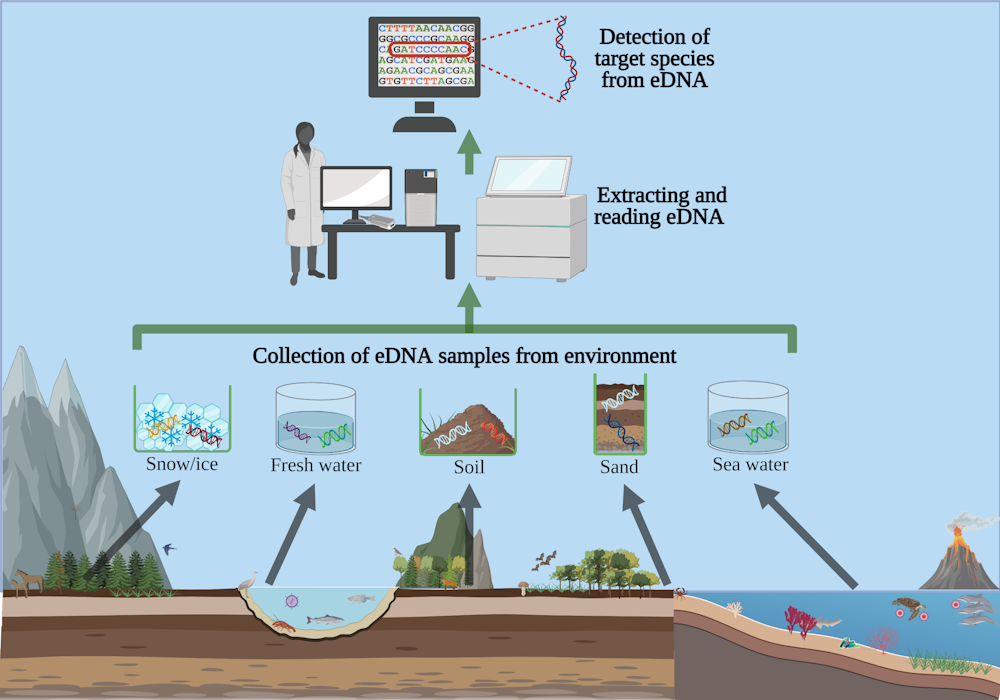Unveiling the Mysteries of Deep-Sea Giants: Understanding the Role of the Ocean’s Colossal Squid
The ocean is a vast and enigmatic place, filled with wonders and peculiarities that have fascinated humankind for millennia. One of its most intriguing and elusive inhabitants is the colossal squid, Mesonychoteuthis hamiltoni, a creature that embodies the mystique of the deep sea. Despite its fame and the public’s fascination, the colossal squid remains a mysterious entity, swathed in the darkness of its remote underwater realm. Recent advances in deep-sea exploration and marine biology have shed some light on the life and habits of this giant cephalopod, offering us a glimpse into a hidden world far beneath the ocean's surface.
The colossal squid, occasionally mistaken for the slightly smaller but more famous giant squid, Architeuthis dux, has captured the attention of both scholars and the public alike. Unlike the giant squid, which has been found in all of the world's oceans, the colossal squid is believed to be confined primarily to the Southern Ocean, in the cold Antarctic waters. This region's frigid, nutrient-rich environment is an ideal habitat for such a large predator, providing ample food sources in the form of large fish and even smaller squid species.
One of the most astounding features of the colossal squid is its sheer size. While exact measurements are rare due to the difficulty in capturing and studying these animals, the largest specimen ever recorded was about 10 meters (33 feet) long and estimated to weigh as much as 495 kilograms (1,091 pounds). Their tentacles are equipped with rotating hooks, a unique feature among squids, suggesting an adaptation to capture prey with incredibly strong and tenacious grips.
The biological functioning of the colossal squid is also a matter of great interest. It possesses the largest eyes in the animal kingdom, each one about the size of a basketball. These enormous eyes are thought to be an evolutionary adaptation, optimized for detecting the faintest glimmers of light in the pitch-black depths where the squid resides. Detecting light at such depths is crucial for hunting and avoiding predators, especially in a region of the ocean where sunlight struggles to penetrate.
Despite their formidable size and predatory skills, colossal squids are not at the top of the food chain. They are known prey for large marine mammals, such as the sperm whale. Scars from squid suckers found on the skin of sperm whales indicate dramatic underwater battles between these titans of the deep. Such encounters are a testament to the dynamic and complex ecosystem that thrives in the cold darkness of the ocean's depths.
The ecological role of the colossal squid is gradually being understood, with implications for our broader understanding of the Southern Ocean’s ecosystem. As apex predators, they have a significant impact on the populations of their prey, which can, in turn, influence the distribution and abundance of other marine organisms. Their role in carbon cycling is another area of interest for researchers. When colossal squids die, their massive bodies sink to the seafloor, sequestering carbon and providing a sudden, sizable food source for a host of deep-sea scavengers.
Another interesting aspect of studying these massive cephalopods is the insight into the effects of climate change on deep-sea environments. The Southern Ocean is undergoing rapid changes, with warming waters and shrinking ice coverage. Understanding how these changes affect the colossal squid can provide clues about the overall health of the marine ecosystem and how other species might be impacted.
Deep-sea research presents numerous technological and logistical challenges. The inhospitable conditions at the depths inhabited by the colossal squid require sophisticated equipment and submersibles capable of withstanding extreme pressure and cold. Additionally, the rarity of encounters with living specimens has made in-situ observations almost impossible. Most knowledge comes from examining deceased individuals that have floated to the surface or been caught in fishing nets. Advances in deep-sea research technology, such as remote-operated vehicles (ROVs) and improved underwater camera systems, hold promise for more direct observation of these creatures in their natural habitat. Scientists are hopeful that with these technologies, the veil can be further lifted from the mysteries surrounding the colossal squid.
Through a combination of scientific exploration and technological innovation, the colossal squid is gradually revealing its secrets. As our understanding expands, so too does our appreciation for the complexities and wonders of deep-sea life. Unearthing the enigma of the colossal squid not only satiates human curiosity but also enriches our knowledge of the ocean's intricate web of life, a testament to the unrelenting spirit of scientific inquiry.Continuing from the fascinating insights into the world of the colossal squid, one cannot discuss this impressive creature without acknowledging the obstacles researchers face in studying it. The deep-sea environment, while home to the colossal squid, is a landscape less explored than even the surface of the moon. This vast, uncharted territory offers a frontier ripe for discovery. Yet, it is the extreme conditions of this habitat that make scientific research both challenging and expensive, often beyond the reach of standard research budgets.
Despite the challenges, a number of institutions across the globe have dedicated resources towards the study of deep-sea biology and the colossal squid. Through international collaboration, scientists have been developing new methodologies for deep-sea exploration that are slowly peeling back the layers of the unknown. One such endeavor is the use of environmental DNA (eDNA), a cutting-edge technique that allows researchers to detect the presence of elusive species like the colossal squid by collecting and analyzing the DNA they leave behind in the water.
This technique provides a non-invasive way to survey large areas of the ocean without the need to spot or capture the animals directly. Moreover, eDNA sampling can offer information about the biodiversity of the ecosystem as a whole, shedding light on the role of the colossal squid within it. Such data is invaluable when considering conservation strategies, particularly in the face of a changing climate that threatens to disrupt the delicate balance of marine life.
Further research into the life cycle of the colossal squid is also advancing, though it remains one of the more cryptic aspects of their biology. Unlike smaller squids, which often have well-documented breeding and migratory patterns, the colossal squid has largely kept its reproductive behaviors a secret. Scientists believe that they may spawn at great depths, where their eggs can develop away from predators. The discovery of a colossal squid egg or juvenile would be an outstanding breakthrough, offering incredible insights into the early life stages and growth of these creatures.
The dietary preferences of the colossal squid are equally fascinating, and recent studies have revealed more about their role as formidable predators. Their diet likely consists of large fish like the Patagonian toothfish, and they may also engage in skirmishes with other large squid. Understanding what the colossal squid eats, and in what quantities, provides important information about how energy moves through the food web and how these top predators can influence their prey populations in the Southern Ocean.
There’s also growing interest in the colossal squid’s adaptations to its deep-sea environment, which could inspire technological advancements. For example, the unique properties of the squid’s flesh and the buoyancy afforded by its ammonia-filled body could lead to innovations in materials science. The chemistry of deep-sea dwelling creatures often contains compounds and enzymes with unique properties that could have practical applications, from antifreeze proteins to novel bio-lubricants.
Public fascination with the colossal squid has proven beneficial for science outreach and education, contributing to broader public interest in oceanography and marine conservation. The display of a colossal squid specimen at museums, such as the one at Te Papa Tongarewa in New Zealand, draw crowds eager to learn more about this incredible species and the environment it inhabits. This blend of enthusiasm and education helps to foster a new generation of ocean advocates, aware of the challenges facing the marine world and inspired to protect it.
As technology advances and research initiatives burgeon, the colossal squid's secrets will continue to be unlocked. Each discovery brings with it a deeper appreciation for the complexity of oceanic ecosystems, the resilience of life in extreme environments, and the interconnectedness of all Earth’s inhabitants. The colossal squid is more than just an intriguing subject of marine biology; it is a symbol of nature's capacity to surprise, of the unceasing quest for knowledge, and of the critical need to understand and preserve the blue depths that cover most of our planet.
The quest to understand the colossal squid is not just a story of scientific achievement but also one of human curiosity and the unyielding desire to explore the unknown. With each dive, each sample, and each observation, the colossal squid reminds us that there are still great mysteries waiting to be solved — lurking in the vast and shadowy waters of our world's oceans.







Comments